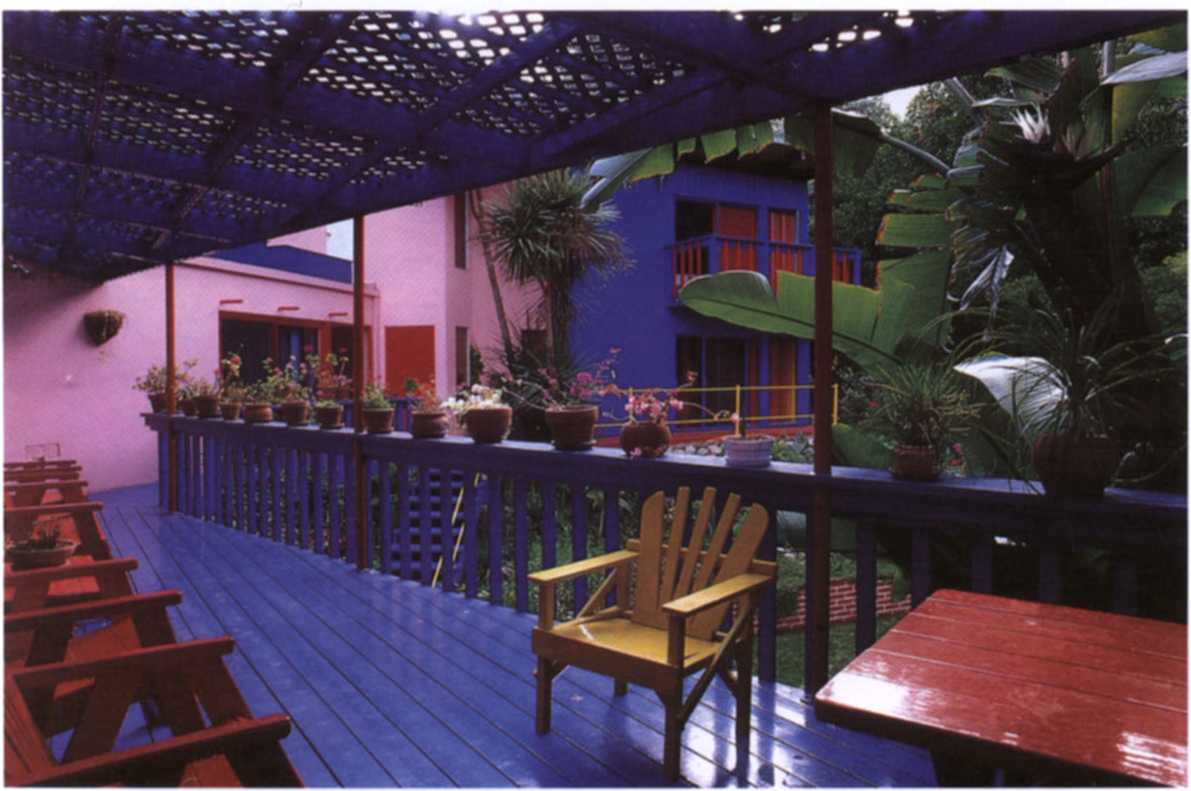New Forms Taschen 152

ahead.' So, without planning, we built this huge tree house 40 or 50 feet off the forest floor in Vermont. Frank was wonderful. He madę me realize that it was OK to be in between art and architecture. I remember him saying, 'Don't worry about the distinctions. Do what you need to do.'"
Today, Maya Lin has worked as an architect in a morę traditional sense, building two houses, but she continues to create sculptures as well. When asked if she is making a conscious effort to challenge the barriers between the two disciplines, she answers, "I have not tried to make an overt statement. There is inspiration and artistry involved in making a monument or designing a house, and yet you are still apparently involved in making something which is functional. For me the Vietnam Memoriał was a sort of exercise, because I never expected it to be built. It was an ideological commentary about trying to go against our standard approach in the United States to monuments. I tried to avoid making any overt political statement, however. What I was concerned with was not modern art - it was not necessarily an esthetic statement. To be apolitical became political - to not declare a victory. The identification of the individual as the individual - that is a twentieth century idea. I had no notion of making a hybrid of earthworks of the 1970s and architecture. I do not tend to approach that kind of esthetic theorizing or commentary within the work. I leave it to others to make such comments."23
The architect Michael Rotondi, one of the founders of the SCI • Arc school in Santa Monica, and former partner of Thom Mayne in the firm Morphosis, has created a new firm with Clark Stevens. Called RoTg, this firm has worked on a number of highly unusual projects, which challenge accepted ideas about the materials and forms of architecture. Their Cemini Learning Center, in Morristown, New Jersey, was designed for an International business consulting group. It is intended to
David Hockney Retidence Hollywood Hills, California Photographed in 1994
Like many of hi* work* of art, the home of David Hockney i* pamted in the taturated color* that he prefers. The intentity and pre*ence of the*e color* it *uch that the vi*itor ha* the imprettion of entering a painting, an idea that Hockney obviously encouraget.

162 Aet ANO AeCHITECTURE
Wyszukiwarka
Podobne podstrony:
80300 New Forms Taschen 173 of f lows. What is important here is not so much the expressed forms as
56746 New Forms Taschen 151 shape that an architect or an artist can imagine, so why not a vividly c
New Forms Taschen 073 400 m long trussed-glass hall. In the area of the Potsdamer Platz, where Merce
New Forms Taschen 212 roof elements, measuring 60 x 130 m are suspended without columns by a tubular
50770 New Forms Taschen 154 the lines between art and architecture, Richard Meier replies, "No.
New Forms Taschen 108 bombing in 1944, and the reconstruction of Ulm was carried out without much re
New Forms Taschen 177 American Dreams Peter Eisenman, once a member of the so-called "New York
więcej podobnych podstron